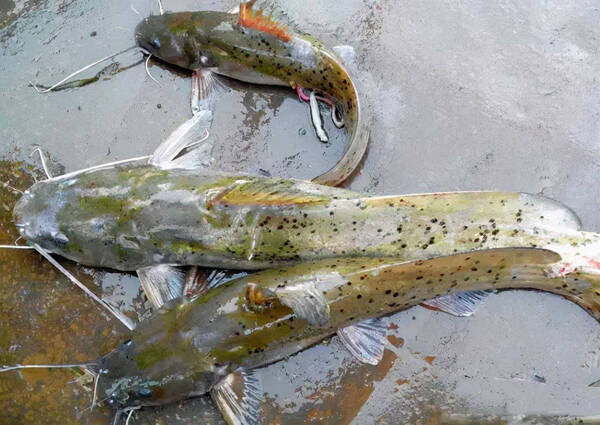Mystus guttatus is a species of the genus Mystus in the family Myscidae. It is also called shad, sesame shad, white-bearded shad, and swordfish and pliers in rural Guangdong. It is large in size, with common individuals weighing 1-2 kg, and some large ones weighing 5-10 kg, and the largest can reach 15 kg.

The spotted catfish mainly feeds on crustaceans, insects, fish, annelids, plant debris, etc., among which the frequency of crustaceans is as high as 78.6%, and the frequency of aquatic insects is 45.8%. The seasonal changes of its food groups are obvious, but there is no period of stopping feeding. The feeding intensity of the spotted broodstock is the highest in spring. The frequency of various foods in spring is higher than in other seasons. The seasonal changes of the spotted broodstock's feeding rate and filling degree are consistent. The bait of spotted broodstock of different body lengths has a certain transformation or replacement stage. The first stage of the main bait transformation is about 170mm in body length, and the second stage of the main bait transformation is about 240mm in body length. As the body length of the spotted broodstock increases, the individuals of its food intake become larger, but the types decrease.
The spotted broodstock reproduces from April to June every year, but mature individuals are also found in June to August. The main basis for judging sexually mature broodstock is: 1) The abdomen of the female fish is swollen, the outline of the ovaries can be slightly revealed on both sides, and it feels obviously soft when touched. Its reproductive opening is slightly red and swollen. 2) The male fish's genital opening is slightly red. When artificially inducing spawning of female spotted bream, it is advisable to inject twice (with an interval of 24 hours). The first injection is PG (carp) + LRH-A + DOM, and the second injection is LRH-A + DOM + HCG. After artificial insemination of spotted bream, under the condition of water temperature of 27.5℃, the fertilized eggs enter the gastrula stage after about 17 hours and 30 minutes, and the embryo hatching time is about 55 hours.
Listed in the second level of the "List of Nationally Protected Wildlife in China". (Wild populations only)
Protect wildlife and eliminate game.
Maintaining ecological balance is everyone's responsibility!